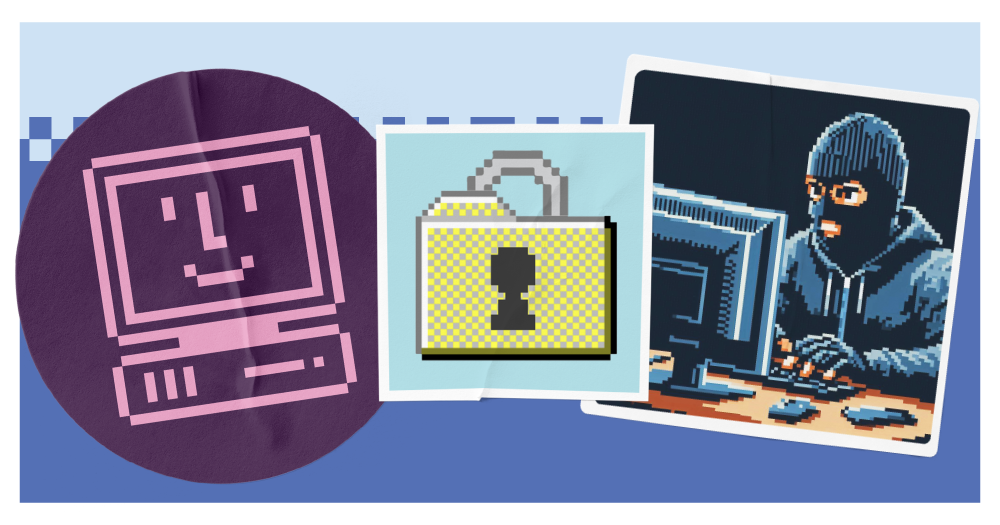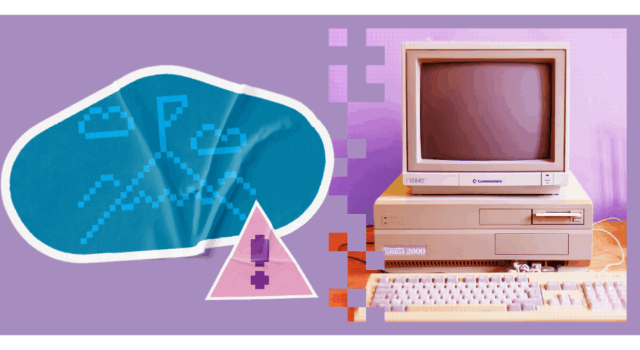Key takeaways
- Keeping business systems secure is critical to protect data, maintain compliance and prevent costly cyber attacks.
- Common risks include weak passwords, outdated software and poor access controls – issues that attackers exploit easily.
- Strengthen security by implementing regular updates, multi-factor authentication and role-based access controls, supported by ongoing staff training and monitoring.
Business systems sit at the heart of daily operations in every modern organisation. ERP platforms manage everything from procurement and inventory to payroll and financial reporting. CRM systems track customer interactions, sales pipelines and marketing performance. And there’s likely more systems sitting alongside them, allowing your workforce to do the tasks they need.
These tools are essential. They enable teams to collaborate, make decisions and deliver services at scale. But as these systems become more interconnected and embedded across departments, they also become more exposed.
Every system is a potential entry point into your wider IT environment. A single vulnerability – like a misconfigured user role, an outdated integration or a weak authentication method – can open the door to serious cyber threats.
That’s why system security is a critical component of your overall cyber security posture. You can protect your software, while ensuring the integrity of the operations that keep your business running. Let’s explore how to keep yours secure.
Why system security is a strategic priority_
First, let’s jump into why having secure systems matters.
Business systems are deeply embedded in the day-to-day running of modern enterprises. If any one of them is compromised, the impact can ripple across departments, disrupting workflows, delaying decisions and eroding customer trust.
This importance also makes them attractive targets. These systems are often highly integrated, with multiple access points, third-party plugins and remote connectivity, all of which can introduce vulnerabilities. A single weakness in one module can become an entry point into your wider IT infrastructure.
That’s why system security is a foundational layer your cyber security strategy. Not only does this protect your individual platforms, it also prevents the threat from spreading throughout your business. Here’s why it matters:
- Entry points for attackers: Business systems often have multiple integrations, user roles and remote access capabilities. A vulnerability in one module (for example, an outdated CRM plugin) can become a backdoor into your network.
- High-value targets: ERP and CRM platforms store financial data, customer information and intellectual property. These are prime targets for ransomware and data exfiltration.
- Lateral movement risks: Once inside a system, attackers can move laterally across your network, escalating privileges and compromising other systems.
- Compliance exposure: A breach in a business system can lead to non-compliance with regulations like GDPR, resulting in fines and reputational damage.
Strong system security helps ensure continuity, resilience and trust across every function that relies on digital infrastructure.
Common vulnerabilities in business systems_
Despite their importance, business systems often contain hidden vulnerabilities that can be exploited by attackers. These weaknesses typically stem from misconfigurations, outdated components or gaps in user awareness.
Here are some of the most common areas of concern:
ERP systems_
Enterprise Resource Planning platforms are often vast and complex, with multiple modules and integrations. Vulnerabilities can include:
- Outdated modules that haven’t been patched or updated, leaving known exploits open
- Poor access controls, where users have more privileges than necessary, increasing the risk of insider threats
- Third-party integrations that introduce insecure code or lack proper vetting
CRM platforms_
Customer Relationship Management systems hold sensitive customer data and are frequently accessed by sales and marketing teams. Risks include:
- Data leakage through unsecured exports, email integrations or poorly managed data sharing
- Insecure APIs that allow external applications to interact with the CRM without sufficient authentication
- Misconfigured permissions, where users can access or modify data they shouldn’t
Shadow IT and legacy systems_
Shadow IT refers to the use of applications, platforms or technology solutions within an organisation without the explicit approval or oversight of the IT department. Often, individual teams or employees adopt these tools to enhance productivity or bypass internal obstacles.
However, because these systems operate outside official controls, they frequently escape rigorous security assessments, patch management and monitoring. This can result in unencrypted data storage, inadequate access restrictions and vulnerabilities that attackers can exploit undetected.
Similarly, legacy systems pose significant risks. As vendors discontinue support for these products, critical security updates and patches are no longer released, leaving known vulnerabilities exposed. Legacy systems may also lack compatibility with modern security solutions, making it difficult to monitor or protect them adequately.
Human error and lack of training_
Even the most secure systems can be compromised by user mistakes. Common issues include:
- Weak passwords or password reuse
- Falling for phishing attacks that grant access to business systems
- Misunderstanding system permissions or sharing credentials informally
These vulnerabilities are often overlooked because the systems themselves are seen as business tools rather than security assets.
Best practices for system security_
Securing business systems demands a strategic, layered approach that addresses both technical and human factors. We’ve listed our best practices to form the foundation of a resilient system security posture:
- Access management: Implement role-based access controls to ensure users only have the permissions they need. Enforce multi-factor authentication (MFA) across all systems and apply the principle of least privilege to reduce the risk of insider threats or credential misuse.
- Patch management: Keep all systems (including ERP and CRM platforms) up to date with the latest security patches. Regular vulnerability scanning helps identify and remediate weaknesses before they can be exploited.
- Data encryption: Encrypt sensitive data both at rest (stored in databases or backups) and in transit (moving between systems or users). This protects against interception and unauthorised access, especially in cloud-based environments.
- Monitoring and logging: Deploy tools for real-time threat detection and maintain detailed audit logs to track system activity. This enables faster incident response and supports forensic investigations if a breach occurs.
- Incident response planning: Develop and regularly test incident response playbooks tailored to your business systems. Include clear escalation paths, communication protocols and recovery procedures to minimise downtime and data loss.
- Third-party risk management: Vet all vendors and third-party integrations for security compliance. Ensure contracts include cyber security requirements and monitor external systems for changes that could impact your internal security posture.
- Creating a security-driven culture: A security-first mindset must be embedded across the organisation, starting with awareness and extending into everyday behaviours. Training and education are essential, covering managing passwords, recognising phishing attempts or handling sensitive data.
- Track progress: To measure progress, organisations should establish clear KPIs and metrics. These might include the number of access violations detected, time to patch critical vulnerabilities or completion rates for security training. Tracking these indicators helps identify gaps, demonstrate compliance and continuously improve your system security posture.
By embedding these practices into your IT strategy, you can reduce risk and build trust with stakeholders, customers and regulators. And for organisations with limited internal resources, partnering with a cyber security consultancy can accelerate implementation and provide ongoing support.
The role of cyber security consultancy and outsourcing_
Securing business systems like ERP and CRM platforms is a complex task that demands specialised knowledge, continuous monitoring and a proactive approach to risk management. Many organisations find that managing these responsibilities internally can be challenging, especially as systems grow in scale and complexity.
External cyber security support can offer valuable advantages. It provides access to up-to-date threat intelligence, helps navigate regulatory requirements, and enables 24/7 monitoring. These are capabilities that are often difficult to maintain in-house. This approach can also be more cost-effective and scalable, particularly for businesses undergoing rapid growth or digital transformation.
ERP and CRM systems, in particular, benefit from targeted security measures. These include secure API configurations, permission audits, encryption protocols and integration reviews to ensure third-party tools don’t introduce new risks. These practices are essential to maintaining a strong system security posture. If you don’t feel like you have the resource to do it well internally, it’s essential that you consider outsourced support.
Strengthen your business security today_
System security is more than a technical requirement; it’s a strategic necessity. As business systems become increasingly central to daily operations, their protection must be prioritised across every layer of the organisation. From ERP and CRM platforms to finance and HR tools, securing these systems helps safeguard data, maintain operational continuity and uphold regulatory compliance.
For IT leaders, CFOs and anyone responsible for digital infrastructure, now is the time to assess your current posture and take proactive steps toward resilience – covering systems and beyond.
To support that journey, we’ve created Get to Secure: a curated video series featuring roundtable insights from cyber security experts and Microsoft. You can explore topics that matter most to your business, from securing integrated platforms to building a security-first culture. Most crucially, you can learn everything you need to do for a robust cyber security posture that reduces the risk of attacks, breaches and long-lasting damage.
Get your free access here.





